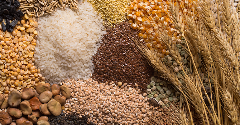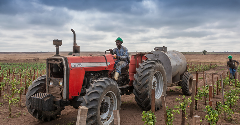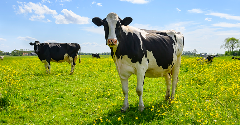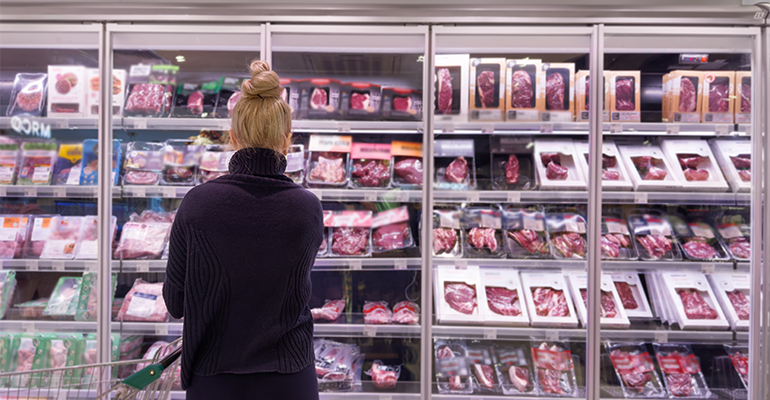News
StePac develops blueberry packaging
2 Jan 2019StePac has developed customized, proprietary, polyamide-based packaging technology for ensuring long-lasting freshness in bulk deliveries of blueberries to distant destinations.

StePac has developed customized, proprietary, polyamide-based packaging technology for ensuring long-lasting freshness in bulk deliveries of blueberries to distant destinations. The new multi-layered packaging, which is the outcome of several years R&D is said to ensure this high value fruit arrives in wholesome condition, with its natural protective bloom intact.
The Xtend packaging solution enhances the consumer experience and safeguards retailers against waste. This resolves the common challenge faced by growers and exporters (mainly from Chile and Peru) who conduct long-haul shipments to faraway countries, such as China — a leading consumer of blueberries. The result is that blueberries shipped in Xtend packaging arrive at destination, even after 35 days, with the full freshness reaped upon harvesting.Last November, during an arrival evaluation, Elizabeth Paredes Cruz of Fiamma, StePac’s Peruvian distributor, interacted with various Chinese importers to understand what the locals consider to be the pertinent quality criteria for blueberries. Highest on their priority list was the appearance of the “bloom”– the natural powdery white wax on the surface of the fruit which innately protects the fruit and reduces evaporation. Second was the taste and the third most important criterion was firmness of the fruit.StePac's breathable, multilayered polyamide-based Xtend packaging is designed to not only regulate headspace gas composition, but also relative humidity. This significantly reduces the risk of condensation build-up and ensures that any condensation that might form within the packaging diffuses out.According to Gary Ward, Ph.D., Technical Development Manager for StePac, blueberries are often packed in polyethylene-based modified atmosphere packaging which minimizes weight loss due to its very low water vapour transmission rate (WVTR). “This is important, but the advantage of reduced weight loss is outweighed by the disadvantage that condensation will inevitably form and become trapped in the packaging. This free moisture is an enemy of the natural bloom and is highly likely to be washed from the surface of the blueberries making it less appealing to the eye and in fact increases the risk of decay.”“The preservation of natural bloom is a far more important parameter than slightly lower weight loss,” notes Ward. “It is the outward indicator of freshness and translates into higher prices for blueberries in the Chinese market.” Sources from within the industry disclosed that at the time of the visit, Peruvian fruit with high bloom arriving in Xtend packaging were typically sold for prices reaching RMB160-200 per carton of 12 clamshells, in comparison to RMB100-120 per carton of 12 clamshells for fruit with less bloom arriving in polyethylene packaging.StePac uses a wide range of polymers with varying WVTR values, including polyethylene, for the delivery of fresh produce in different packaging formats. “Custom-designed packaging that provides optimal modified atmosphere and moisture control and ensures that the produce arrives in prime condition requires a thorough understanding of the interaction between the physiology and pathology of fresh produce and its packaging environment,” adds Ward. “. Polyethylene-based packaging solutions are suitable for certain produce items and applications, but are an inferior solution for bulk shipment of blueberries.”Related news

Sustainable grains present a healthy growth opportunity
3 Oct 2024
Food insights provider SPINS unveils the latest trends in the sustainable grains field, exploring how seven leading grains show healthy growth despite challenges in the global value chain.
Read more
Will we see a wave of NPD that focuses on insulin management?
1 Oct 2024
As a new study finds protein and fats can help manage insulin, food manufacturers are building on emerging GLP-1 platforms and supporting nutritional guidance.
Read more
New environmental food scoring standards emerge
30 Sep 2024
EIT Food and Foundation Earth collaborate to launch environmental food scoring for products entering the global supply chain.
Read more
Africa progresses with food transformation strategy
19 Sep 2024
Large-scale efforts are underway to drastically change the African food sector with a $61 billion (€55 bn) set of proposed transformation plans to be implemented across forty countries. Yet there are concerns that this initiative severely jeopardises s...
Read more
European Commission releases new supply chain recommendations
6 Sep 2024
The European Union’s (EU) legislative arm publishes its latest guidance on protecting the market’s food supply chain against current and future crises.
Read more
Tesco trials methane mitigation supplement for dairy cattle
5 Sep 2024
Tesco is trialing a methane-reducing feed supplement for one of its key UK dairy farms, sustainable UK milk producer Grosvenor Farms.
Read more
European consumers want more freedom to choose biotech-based food
3 Sep 2024
Survey findings point to growing levels of interest in cultivated meat as European consumers say they want the freedom to choose the lab-based products.
Read more
Will ‘foie gras’ become the EU’s first approved cultivated meat?
20 Aug 2024
French startup Gourmey has submitted its cultivated foie gras for approval in the European Union (EU), signalling the first application of its kind in the region.
Read more
Europe gravitates to African spices
19 Aug 2024
Shipping delays, limited production output and climate change impact Europe’s spice supply, creating opportunities for African brands to enter the captive market.
Read more
Paris Olympics: Food and beverage brands champion health, fun, and sustainability
5 Aug 2024
Food and beverage brands are aligning with the Paris Olympics 2024 Food Vision, which emphasises sustainability, local sourcing, and plant-based diets.
Read more